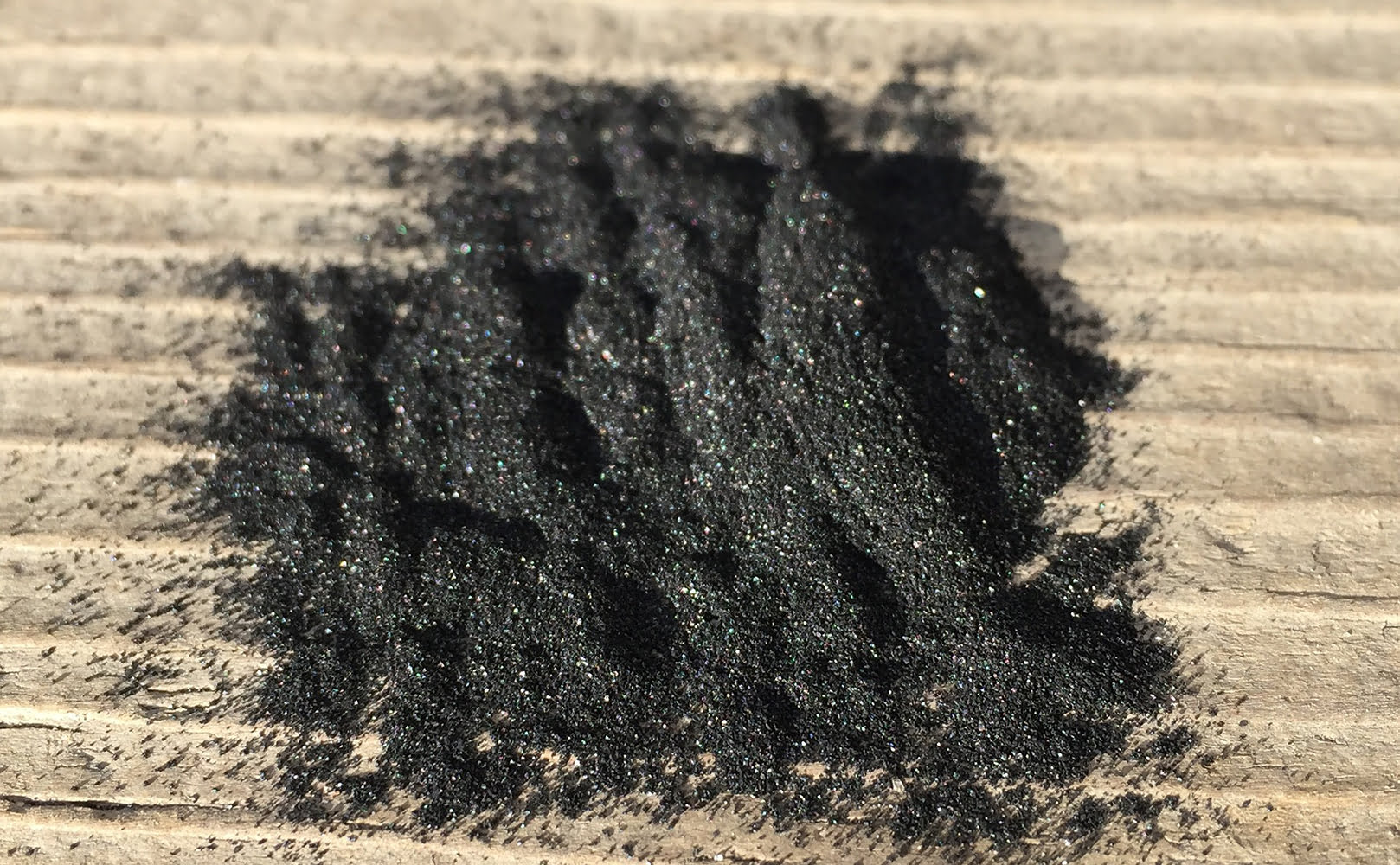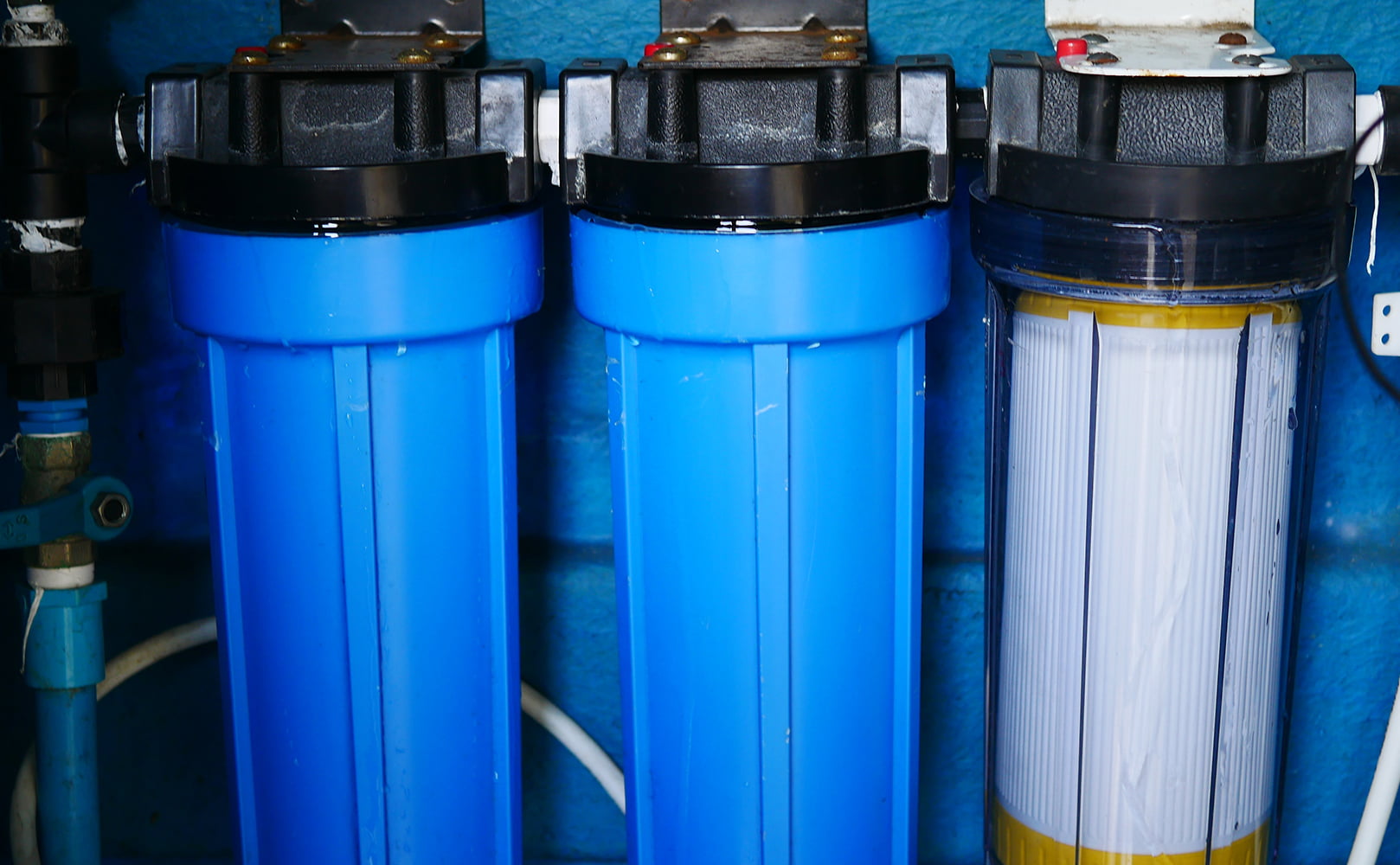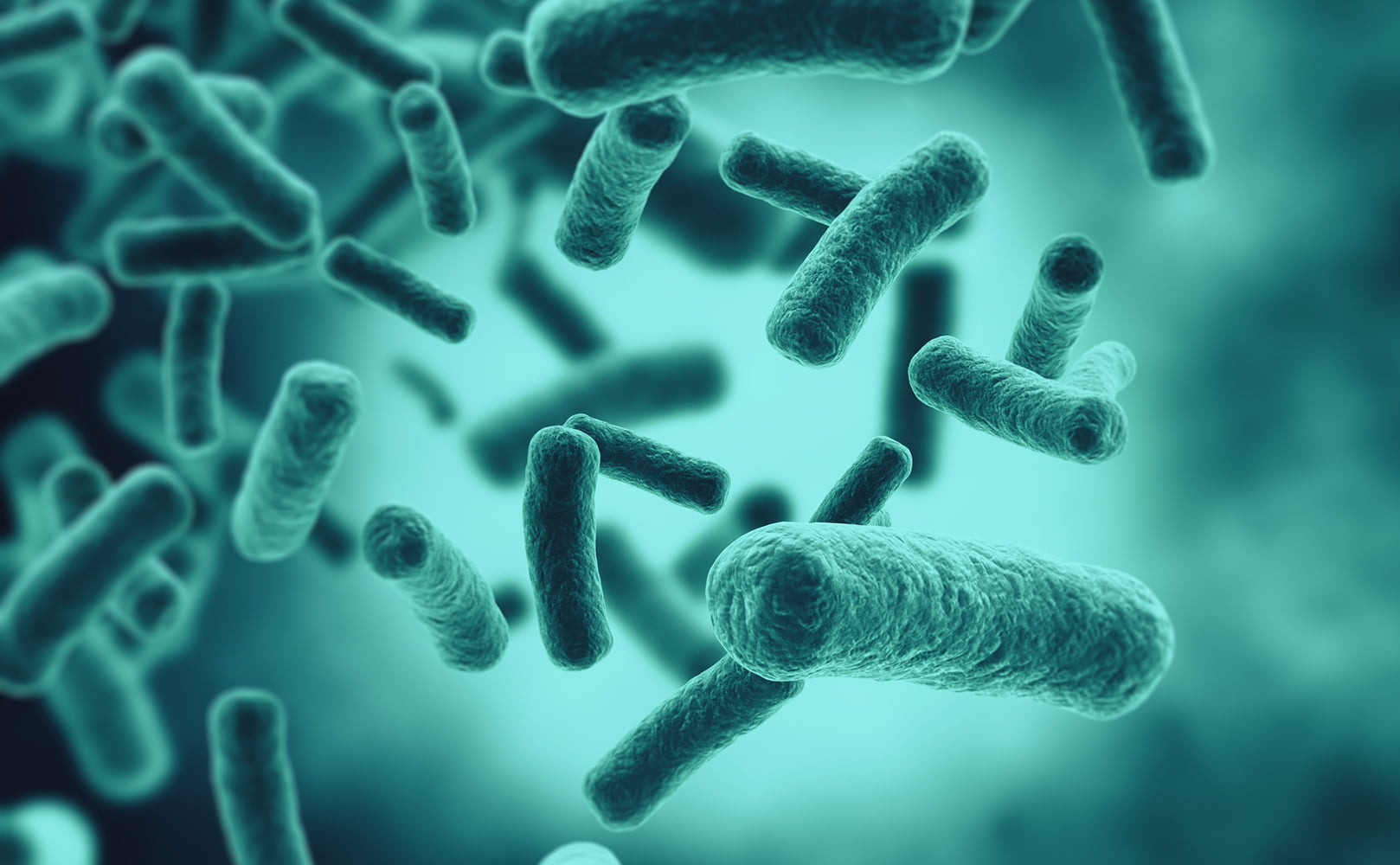The Different Types of Whole House Water Filters Explained
Written by: Gene Fitzgerald // Last Updated: Jan 4, 2023
This page may contain affiliate links. If you buy a product or service through such a link we earn a commission at no extra cost to you. Learn more.
There are very few household appliances that offer as much benefit as a whole house water filter. But what type of system do you need, and how does it fit your unique water problem?
In short, there are around ten types of whole house water filtration systems, respectively utilizing a different technology. Each features the ability to remove a specific set of contaminants.
However, no filter removes all contaminants, and therefore it’s essential to know exactly what each type of filtration is capable of doing. To make your decision simpler, here we list:
- Every major kind of whole house water filter
- How it works (technology)
- What it can remove
We shall also discuss the advantages and disadvantages of each whole house water filter type to help you figure out precisely what you need.
Key Takeaways
The different types of whole house water filters are:
- Sediment filters – target floating particles like sand, clay, flecks of rust, and debris
- Activated carbon filters – adsorb numerous contaminants such as chlorine and improve the taste and smell of the water
- Catalytic activated carbon – highly effective at removing chloramines
- KDF filters – use redox reactions that can remove/reduce chlorine, lead, mercury, hydrogen sulfide, chromium, and more
- Ion exchange whole house water filters – for salts and metals
- Iron, manganese, and sulfur filters – based on oxidation
- Acid neutralizers (calcite filters) – used to balance out the pH level of the water supply
- Activated alumina – removes fluoride, arsenic, selenium, uranium, and thallium
- RO systems – uses a semipermeable membrane among other filter elements. Rejects a broad range of contaminants including heavy metals, salts, chemicals like pesticides and trace pharmaceutical, and microorganisms
- UV filters – use ultraviolet light to target microorganisms
- Ultrafiltration – uses a very fine membrane that can filter particles as small as 0.02 microns
Types of Whole House Water Filters
Your decision to select a whole house water filter system will depend mainly on the biochemical properties of your water, water pressure, type of plumbing in your house, and lastly, your expectations from it.
Most advanced whole house filters feature a robust combination of various filtration techniques to ensure meticulous contaminant removal. Some are based on single-stage filtration, while others may use multi-media treatment.
Sediment Filters
As the name suggests, sediment filters target undissolved particles like sand, clay, flecks of rust, and debris. The filter acts like a physical barrier that stops larger particles from infiltrating your water supply.
These mechanical filters feature a sieve-like media that blocks contaminants according to their size. They are available at different micron-rated capacities, down to the sub-micron level. For reference, a human hair is 70 microns.
Pros
- Cheap
- Easy to install
- Remove turbidity, sand, dust, large particles
Cons
- Don’t remove chemicals and most heavy metals
- Can’t treat bad odor and taste
- Need frequent replacements
Activated Carbon Whole House Water Filters
Activated carbon is the most popular whole house filter media since it adsorbs numerous contaminants and improves the taste and smell of your water too. Carbon-based filtration systems remove chlorine, bad tastes, odors, and chemicals like THMs, herbicides, and pesticides.
Activated carbon – it’s also known as activated charcoal when derived from charcoal – is a form of carbon that has been treated to expand its surface area and become highly porous.
There are two types of carbon-based filters:
- Activated carbon blocks (ACB)
- Granular activated carbon (GAC)
An activated carbon block is made by tying fine carbon powder using a bonding agent. In contrast, GAC filters contain loose granules of activated carbon. While an ACB filter is more restrictive, water can pass more freely through GAC.
Therefore, GAC filters are more popular in whole-home filtration systems as they allow higher water pressure. At the same time, they won’t reduce as many contaminants as a carbon block.
Pros
- Remove chlorine and partially chloramine
- Improve water taste and smell
- No chemical additives
- Affordable price (compared to its performance)
- No power supply required
Cons
- Cartridge-style filters need frequent replacement
- Will not remove stubborn contaminants like most heavy metals
Catalytic Activated Carbon
Catalytic carbon filters are more effective at removing chloramines, a somewhat problematic contaminant.
Most water utilities are now using chloramines instead of chlorine to disinfect their water since it’s more stable. Compared to activated carbon, catalytic carbon retains an enhanced capacity to catalyze chloramines into chloride, leaving ammonia behind.
Pros
- Remove all chlorine and chloramine
- Faster chemical reactions
Cons
- Catalytic carbon is better at removing lead, but still many other harmful contaminants, heavy metals in particular, are left untouched
KDF Filters
KDF, Kinetic Degradation Fluxion, features a unique redox reaction based on the process of oxidation and reduction. A combination of copper and zinc is used to construct the filter media that’s often used to enhance the performance of other media layers in a whole house water filter system.
KDF can remove/reduce chlorine, lead, mercury, hydrogen sulfide, chromium, and more. Plus, it controls bacteria, algae, and other microorganisms.
There are two recognized types of KDF filter media:
- KDF-55
- KDF-85
You may have already noticed, all filtration techniques have limitations. By adding KDF to a carbon-based system, a whole house water filter can target a much wider range of contaminants.
Pros
- Better tasting water
- Assist GAC and catalytic carbon filters to better remove contaminants
- Also remove iron and hydrogen sulfide
Cons
- Do not remove organic contaminants
Ion Exchange Whole House Water Filters
Water softeners use ion exchange for the process of separation of certain minerals, mainly calcium and magnesium, causing water hardness.
But since calcium and magnesium aren’t contaminants but healthy impurities, water softeners aren’t technically classified as water filters but as water purifiers.
Still, a whopping 85% of the USA has hard water. Therefore, water softening systems are one of the most commonly used water treatment devices. That’s because removing calcium and magnesium reduces scale buildup inside pipes, water heaters, and fixtures. Besides, it leads to better skin and hair.
Other types of ion-exchange systems which we consider whole house water filters in the real sense utilize similar technology like water softeners, but are designed to target specific contaminants.
Pros
- Remove/reduce dissolved inorganic substances
- Relatively inexpensive to install
- Regenerate on its own for continuous usage
- Can remove arsenic, sulfates, and other negatively charged contaminants
Cons
- The resin bed can foul due to bacterial and chlorine contamination
- Do not target sediment, organic substances, and microorganisms
Iron, Manganese & Sulfur Filters
Water that is high in iron often has a high percentage of manganese and sulfur too. Therefore, iron filters usually target all three and use different filter media to purify your water effectively.
High iron content in your water supply will show up as brown stains on your laundry, stained pipes, and foul-tasting water. Whereas a rotten egg-like smell from your water signifies the presence of hydrogen sulfide (sulfur).
While you may be confident that your water supply has high iron content, it’s best to test the water to figure out the exact iron concentrations and the presence of other co-existing contaminants. Moreover, iron can be present in two forms:
- Soluble or ferrous iron
- Insoluble or ferric iron
Ferrous iron is dissolved in water and must first be made insoluble to make it visible and easy to remove. The most common way to make iron insoluble, or solid, is to expose it to oxygen. This process is called pre-oxidation, which is the first step in an iron removal filter.
Here are a few methods of pre-oxidation:
- Aeration – brings water and air in close contact
- Air Injection – uses a valve to inject oxygen into the water
- Chemical oxidation – follows a precipitative process
Once all iron is solid, it can be filtered out relatively easily using various types of filter media such as catalytic carbon or greensand. Greensand filters are also very efficient at removing manganese and sulfur.
Acid Neutralizers (Calcite Filters)
Acid neutralizers aim at balancing out the pH level of your water supply. Low pH not only contribute to poor water flavor but also increase the risk of metal contamination due to corroding pipes.
The technology uses natural minerals to increase the ph level of your water to make it less acidic or even neutral/alkaline. Also known as calcite filters, these whole house water filtration systems use calcium carbonate and magnesium oxide to neutralize the water.
As water passes through the media, a small part of it dissolves and mixes with the water. Once the water leaves the filter, it should be alkaline and safe to use.
Some acid neutralizers backwash the filtration media, which is usually needed if your water is also high in iron.
Pros
- Effective to treat acidic water
- Provide better tasting water
Cons
- Ineffective as standalone filters
- Cannot remove any contaminants
Activated Alumina
Activated alumina doesn’t filter the contaminants; it adsorbs them. This type of whole house water filter is mostly used to treat water with high fluoride or arsenic content. AA filters are also designed to remove selenium, uranium and thallium from your water supply.
The filter media features a highly adsorptive material: Aluminum hydroxide, with a surface area as large as 200 sqm per gram.
As water passes through the activated alumina granules, it can absorb up to 10 ppm of fluoride. But this also depends on the contact time between media and water.
Pros
- Highly effective to remove up to 99% fluoride and arsenic
- Also remove arsenate and sulfate
Cons
- Can remove only a few contaminants
- Need to be cleaned periodically
Reverse Osmosis Whole House Water Filter Systems
Reverse osmosis filters offer the most comprehensive removal of water contaminants. Water is passed through a semipermeable membrane that rejects many different kinds of contaminants, including heavy metals like lead, nitrates and other salts, pesticides, pharmaceutical run-offs, bacteria, and arsenic.
Thus, RO systems are unrivaled in their potential to remove a long list of contaminants, but unfortunately, they come with a fair share of setbacks.
No matter how advanced a whole house RO system, it is notorious for producing a significant amount of wastewater to carry out the purification process.
The water that is free of harmful contaminants is called permeate, and the leftover concentrate is called brine. For each gallon of permeate, a whole house RO filter produces up to 4-5 gallons of brine.
Moreover, RO membranes are prone to contamination due to hardness, chemicals and chlorinated water, so pre-treatment is essential to prevent fouling.
Pros
- Feature most elaborate and meticulous filtration
- Membranes last for a good 2-3 years before needing replacement
- Remove dissolved solids, bacteria, and hazardous chemicals
Cons
- Not eco-friendly as the systems waste a lot of water
- Might reduce water pressure
UV Filters
UV filters feature ultraviolet light that targets microorganisms like viruses, bacteria (e.g. E Coli), and cysts (cryptosporidium, giardia). These contaminants are infamous for disrupting gut health and expose your body to a host of illnesses.
The filter exposes the water to germicidal ultraviolet light that alters the DNA of living organisms rendering them harmless. UV filters are also generally effortless to maintain.
However, they don’t “filter” anything out; they only inactivate microorganisms trying to sneak into your water supply.
UV filters are safe and chemical-free, but on their own they are not the best options for whole house water filtration. First, this is because UV light fails to work on muddy or unclear water. Secondly, UV light doesn’t remove any harmful contaminants.
Their potential to manipulate bacteria etc. make them excellent post-filters in a whole house water treatment system.
Pros
- Safe and easy to maintain
- UV light does not alter the taste or smell of water
- Only require yearly light bulb changes
- Environmentally-friendly
Cons
- Don’t remove sediment, heavy metals, or any other contaminants
- Require pre-filtration
- Require power supply
- It won’t be effective if water contains sediment as UV light only works on clear water
Ultrafiltration
Ultrafiltration whole house water filters entail similar technology as a sediment filter. Using a mechanical barrier, these systems can remove particles as small as 0.02 microns.
A hollow semi-permeable fiber sheet acts as a physical barrier to remove microscopic pathogens like bacteria and viruses. Similarly, ultrafiltration is very effective for the removal of some pesticides and even lead (partially).
However, ultrafiltration fails to filter dissolved solids like salts and fluoride. Therefore if your water has a high TDS level, it won’t be a good idea to use a standalone ultrafiltration system.
Pros
- Easy to install and maintain
- Eco-friendly
- Remove microorganisms
Cons
- Don’t improve the taste and smell of water
- Ineffective at removing dissolved substances and organic contaminants
Water Filter Cartridges vs. Large Media Tanks
Whole house water filters are either cartridge-based or tank-based. Tank-based filters often apply backwashing to prolong their service life.
Both whole house filtration system types feature a few advantages over the other.
Advantages and Disadvantages of Cartridge Style Filters
- Commonly used for sediment, carbon, or multimedia filtration
- There are many different types of whole house filter cartridges
- These systems are popular due to the ease of installation and maintenance.
- They are mostly compact and take up less space.
- Since the filters do not backwash, you don’t need a drain connection.
- You can simply remove the old cartridge from the filter housing and exchange with a standard-sized replacement. Unfortunately, you need frequent changes, especially if you are using smaller cartridges (2.5 x 20 inches).
- There is no water waste.
- Cartridge based units can work effectively in households with low water pressure.
- Canister-style systems are also cartridge-based units. They combine cartridge and housing into one, eliminating the need to maintain separate filter housings.
- Moreover, whole house cartridge filters may cause a significant drop in water pressure around the house due to providing lower flow rates.
Advantages and Disadvantages of Large Media Tanks
- Most recognized and effective whole house water filters feature tank-based systems.
- When sized adequately, they don’t affect water flow or pressure.
- Large media tank filters last way longer than filter cartridge. Some units may last as long as 10+ years.
- These units can remove a large number of contaminants.
- You will need dedicated space to install these tanks.
- An electrical socket and a connection to drainage are also essential for most systems.
- Backwashing the filter requires enough water pressure and produces wastewater.
- Not to forget, these units are difficult to install and may require professional installation.
If you have any questions about the different types of whole house water filters please don’t hesitate to leave a comment below!
Information provided on BOS is for educational purposes only. The products and services we review may not be right for your individual circumstances.
We adhere to strict editorial guidelines. Rest assured, the opinions expressed have not been provided, reviewed, or otherwise endorsed by our partners – they are unbiased, independent, and the author’s alone. Our licensed experts fact-check all content for accuracy. It is accurate as of the date posted and to the best of our knowledge.





